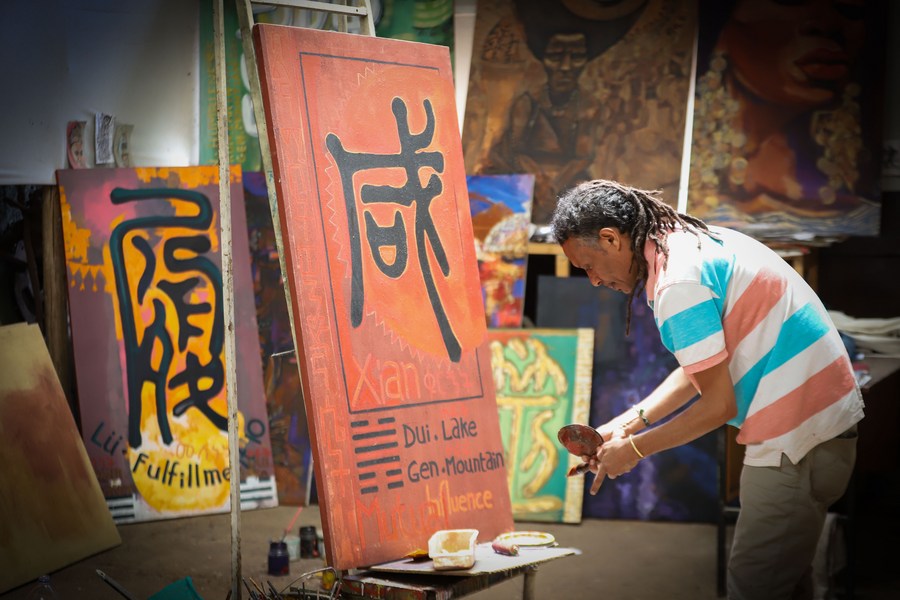Standing in front of a canvas in an art gallery in the heart of Addis Ababa, Ethiopia’s capital, 50-year-old artist Dawit Muluneh is fully absorbed in the painting of ancient Chinese characters.
ADDIS ABABA, March 26 (Xinhua) — Standing in front of a canvas in an art gallery in the heart of Addis Ababa, Ethiopia’s capital, 50-year-old artist Dawit Muluneh is fully absorbed in the painting of ancient Chinese characters.
Surrounding him are collections of his artwork based on the Chinese classic “I Ching,” or the “Book of Changes.” The book has existed for more than 2,000 years and remains a source of Chinese culture.
ADDIS ABABA, March 26 (Xinhua) — Standing in front of a canvas in an art gallery in the heart of Addis Ababa, Ethiopia’s capital, 50-year-old artist Dawit Muluneh is fully absorbed in the painting of ancient Chinese characters.
Surrounding him are collections of his artwork based on the Chinese classic “I Ching,” or the “Book of Changes.” The book has existed for more than 2,000 years and remains a source of Chinese culture.
“I Ching means truth and is founded on the eight gifts of nature, namely heaven, earth, thunder, wind, water, fire, mountain, and lake. In general, I Ching explains the wisdom of nature,” said Muluneh in a recent interview with Xinhua at the art gallery called Medemer Africa Art and Sculpture Space.
The artwork collection, consisting of 64 paintings that represent 64 divinatory symbols in the book, portrays the day-to-day interaction between man and nature, and imparts knowledge and feelings to visitors with descriptions written in Chinese, English, and Amharic (Ethiopia’s working language).
Although Muluneh does not speak Chinese, he became immediately interested in I Ching a few years ago after his friend Gossa Oda, also the gallery owner, introduced him to “The Complete I Ching,” a book that explains the ancient Chinese masterpiece in English.



No Comment Found.